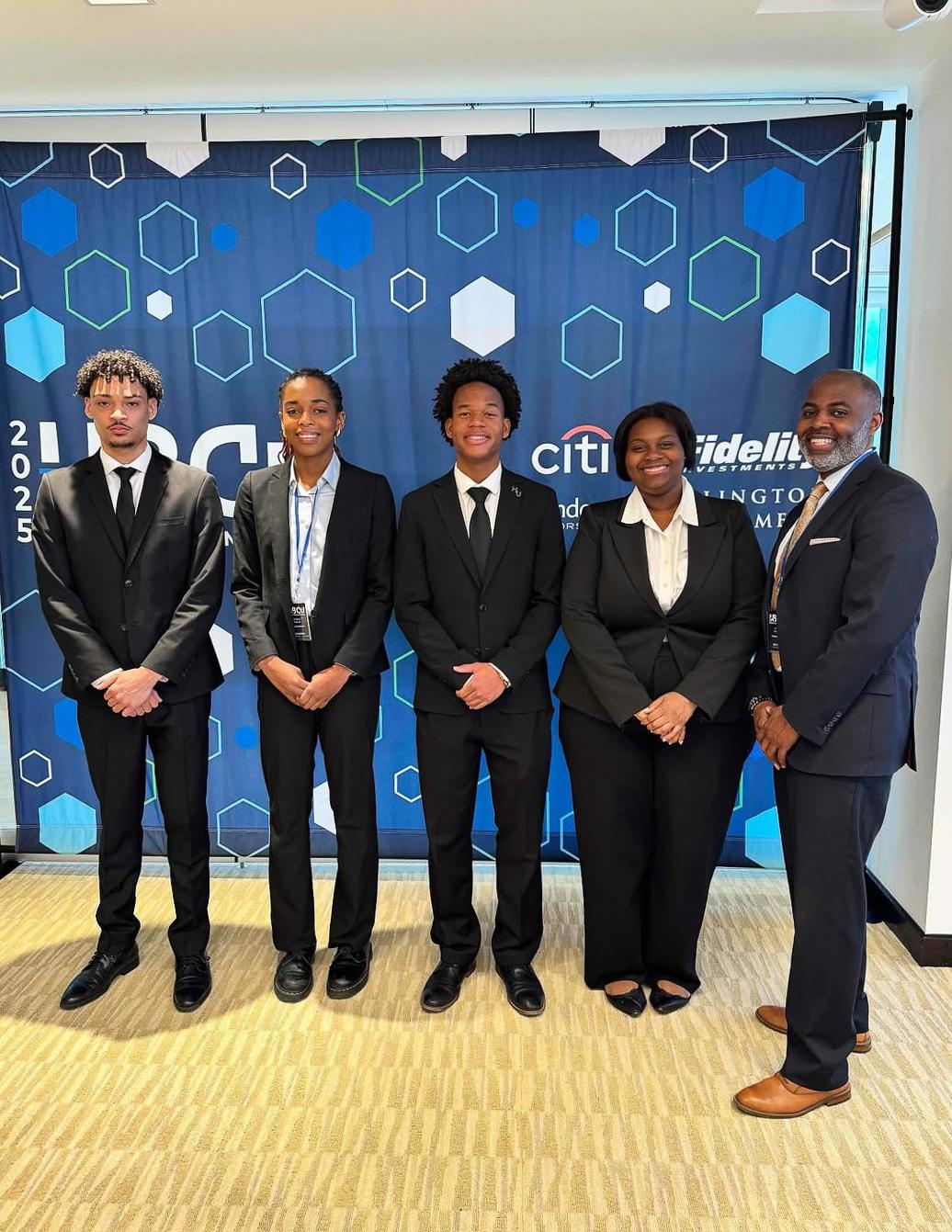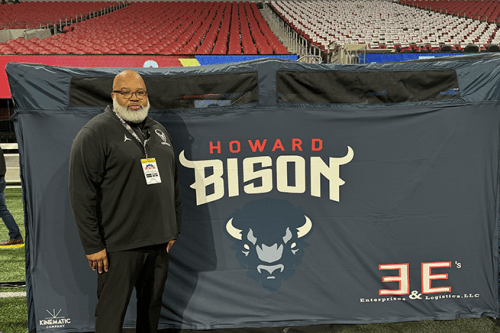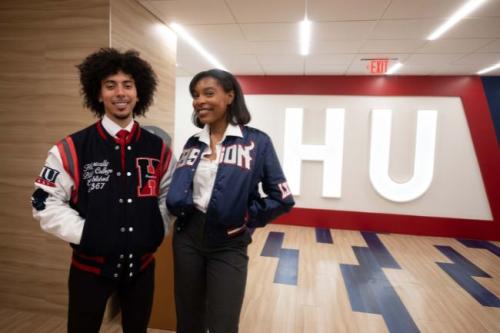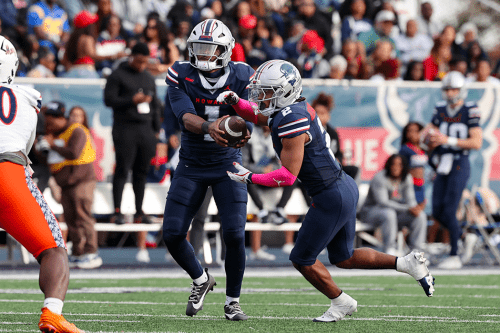When five first- and second-year Bison walked into Goldman Sachs’ Lower Manhattan headquarters this spring, they carried more than a semester’s worth of case-prep materials. They carried the expectations of an institution determined to widen the narrow gates of high finance. Their victory in the firm’s fifth annual Market Madness: HBCU Possibilities case competition (worth a $1 million unrestricted grant to Howard University) was a headline grabbing moment, but it was hardly a lucky break.
It was the latest proof of concept for the Howard University School of Business HPS Center for Financial Excellence (CFE), which exists to transform talented but historically excluded students into investment banking, private equity, and asset management professionals of the future. Housed on the School of Business' fifth floor, the CFE was endowed in 2022 through a gift from global investment firm HPS Investment Partners with the stated purpose of “provid[ing] innovative student programming that produces high-caliber graduates for careers in finance — especially in investment and wealth management, commercial and investment banking, real estate, and capital markets.”
Under the leadership of center director Curtis Kidd Telemaque (MBA ’04, Ph.D. ’08), the CFE layers intensive technical training on top of Howard’s already rigorous undergraduate curriculum. Experiential learning tracks such as the Investment Management Academy Scholars Program and Wealth Management Program pair students with real-money portfolios or client-simulation projects. “Wall Street on Campus,” an annual multi-day seminar, brings executives from firms such as Goldman Sachs, Morgan Stanley, Citi, and BNP Paribas directly to Washington to teach applied finance workshops. A year-round menu of bootcamps — from “Beginner Financial Modeling” to “Bloomberg Terminal Training” — gives students the hard skills recruiters expect on day one. Plus, dedicated scholarships and an HPS-funded mentorship program offset the costs of exam preparation and travel to internships, ensuring that money is never the reason a student turns down an opportunity.

Add in student-run clubs such as the Howard University Investment Group and Black Venture Capitalist Club, and the result is an ecosystem that mirrors a small business school inside the larger one, a hub expressly designed to attack the structural barriers Black students face when trying to break into elite finance roles.
“Part of our broader approach is that we would like to make Howard and specifically the School of Business known for its financial teaching,” Kidd expressed, likening their efforts to noted powerhouses MIT, Columbia University, and Harvard Business School. “That's what we want Howard University to be in the next five years.”
Nonetheless, systemic barriers remain steep. According to a Bloomberg analysis of graduate hiring at global banks headquartered in London and New York, only 0.5% of senior investment bankers identify as Black, roughly one in 200 people in the upper echelons of deal-making. The picture is no better on the buy side: A 2024 Knight Foundation study found that minority- and women-owned firms manage just 1.4% of the roughly $82 trillion in U.S. assets under management, even though they perform on par with industry averages.
“Part of our broader approach is that we would like to make Howard and specifically the School of Business known for its financial teaching.”
Kidd sees it as part of the center’s role to prepare students for the cultural and practical realities of Wall Street, beyond technical training, to help bypass any potential impediments. “I have to make them aware of the harsh realities of the financial services industry,” he explained, emphasizing the importance of projecting professionalism at all times. “Wealth management is client-facing, so building those relationships matters. It could also be how they articulate what it is that they say in the boardroom, or how to prepare an investment pitch deck — to even maybe golf and tennis lessons, those sports that would be typically played at a country club.”
The human cost of this underrepresentation extends beyond corporate organizational charts. The Federal Reserve’s Survey of Consumer Finances shows median Black household wealth rose to $44,890 in 2022, yet white households still held a median of $285,000: a gap of more than six-to-one. Pew Research Center data paints the same picture: Black median net worth sits below $30,000, less than one-ninth that of Asian American households and one-tenth that of white households. Low representation in high-paying, equity-rich occupations like investment banking and private equity is a core driver of that gap, compounding over generations through restricted savings, limited access to professional networks, and fewer chances to participate in carried-interest or restricted-stock windfalls.
That context makes the Market Madness win more than a prize. The competition is the capstone of Goldman’s HBCU Possibilities Program, a semester-long “immersive introduction to key financial concepts and their real-world applications.” The Howard squad — Keyla Arrechea, Jordan Atkins, Aaron Harrison, Kadijah Mansaray, and Jada Rabun — out-pitched 11 other HBCUs with a proposal to launch adaptive athletic apparel under Amer Sports’ Arc’teryx brand ahead of the 2026 Paralympics. Their plan wowed judges through two virtual rounds before the live finals in New York.
For the students, the victory only preceded summer internships at NVIDIA, Blackstone Wealth Management, and Goldman itself, while the unrestricted $1 million flows straight back into scholarships, Bloomberg terminals, and future case-competition travel for the CFE. As Harrison put it, “It was about selling an experience,” and proving, in front of one of the world’s most selective finance firms, that Howard talent belongs in the room.
Goldman’s partnership with Howard and its fellow HBCUs is strategic: Wall Street is under pressure from investors and regulators to widen its talent funnel, even as some big banks dial down public inclusion messaging. Pipeline programs that deliver hard skills and measurable results give firms a way to keep commitments without courting controversy. But that relationship is reciprocal: Students gain exposure, mentors, and résumé lines; Goldman gains analysts who can navigate both spreadsheets and cultural nuance. It is an exchange of value, not charity.

Kidd is confident in the value that his students bring to these firms, be it a large company like Goldman or a more boutique organization, and therefore aspires to see an even deeper commitment to their scholarship. “If it were up to me, every corporate partnership that we have would also be more of a fellowship,” he said. “When I say that, I mean that they will take responsibility of employing our students both as interns and [after] they graduate, if the student wants to stay.”
The CFE’s approach goes beyond résumé prep. Workshops on personal finance and investing help students translate institutional concepts into household strategies, knowledge they then take back to their families and communities. When graduates step onto a trading floor, they do so with the power to hire peers, back minority-owned funds, or steer capital toward underserved neighborhoods.
“A larger strategy of what it is that we're trying to do here is to create black wealth, and these particular jobs allow students to have a lot of options,” Kidd said. “When I say a lot of options, I mean dollars, right? We would hope that the same students would, in fact, give back to the university and their communities, and in ways that could be monetary — but also with their time and technical acumen.”
Structural inequities in savings, wealth accumulation, and executive representation are too large for any one pipeline to solve. But they are not immutable. The CFE demonstrates what happens when a historically Black institution pairs its century-old commitment to social mobility with Wall Street-grade technical rigor and corporate partnerships willing to put real money behind rhetoric.
After this spring’s performance, and with a million-dollar vote of confidence from Goldman Sachs, the room is starting to look a lot more like Howard University.






